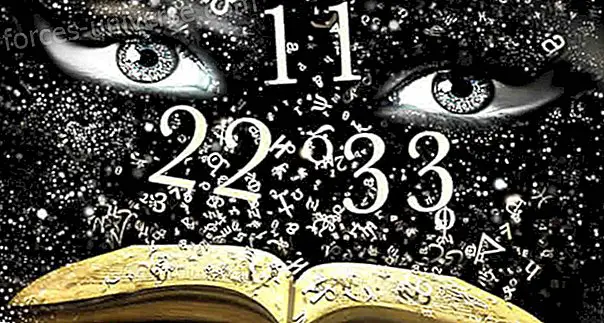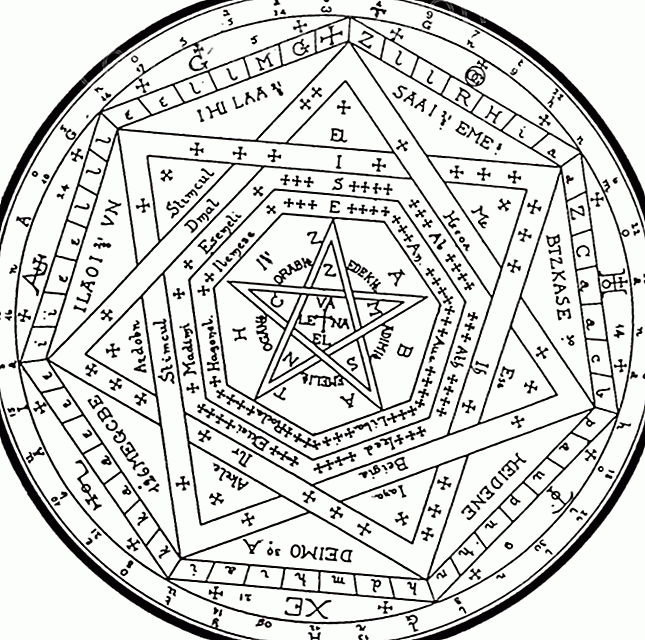 "It is totally false and cruelly arbitrary to put all play and learning in childhood, all work in middle age, and all regrets in old age." Margaret Mead. "Old age is particularly difficult to assume because we had always considered it as a strange species: I, I became another, while I remain the same" Simone de Beauvoir. Simone de Beauvoir, in her book "Old age" says: "When Buddha was still Prince Sidarta, locked up by his father in a magnificent palace, he escaped several times to ride around the car. On his first outing he found an achy, toothless man, all full of wrinkles, gray-haired, hunched over, leaning on a cane, stammering and shaking. To his amazement, the coachman explained what an old man is: - “What a misfortune - exclaimed the prince - that weak and ignorant beings, drunk with the pride of youth, do not see old age. Let's go home fast. What is the use of games and joys if I am the abode of the future old age? ”North America has labeled the word death as vocabulary: it speaks of the loved one who left ; It also avoids any reference to advanced age. In France, currently, it is also a prohibited topic. When at the end of the force of things I broke that taboo, what outrage I caused! Admitting that I was on the threshold of old age stalked all women, who had already taken over many. With kindness or anger many people, especially old people, repeated to me abundantly that old age does not exist! There are people less young than another, that's all. For society, old age seems a kind of shameful secret of which it is indecent to speak. On women, children, adolescents, there is an abundant literature in all sectors; Outside of specialized works, allusions to old age are very rare. A comic book author had to remake a whole series because he had included a couple of grandparents in his characters: "Suppress the old", they ordered. When I explain that I am working on an essay on old age, most often they tell me: Buddha recognized his destiny in an old man because, born to save men, he wanted to assume his total condition. In that it differed from them, that they avoid the aspects that displease them. And in particular old age. -"What idea…! If you are not old ...! What a sad subject ... "That is precisely why I write this book: to break the conspiracy of silence ..." David Le Breton, specialized in the anthropology of the body, writes that, in reality ... "aging is an abstraction. With an infinite slowness, the passage of time is marked on the face and gestures, limits the action, but without breaking, without trauma. Aging is a slow road, it never weighs; Only the last drop overflows the glass. For a large part of existence the elderly are the others (...). The awareness of aging or of being an elderly person is born from the gaze of the other. ““ Modernity tends to make old age a stigma. Old age slowly slips out of the symbolic field, because it repeals the core values of modernity : youth, seduction, vitality, work, results. Unintentionally it is an embodiment of the rejected, such as the "disabled", the disease, the proximity of death or death itself. ( ) . The aging person, each of us will know one day, is the child he was: the same face, the same astonishment in front of the world . From the child to the old, there is a disturbing continuity, a similarity never denied. Hence, very old, we die with the face of our childhood, but we are the only ones to know. A American comedian enunciated loudly the intimate murmur that torments many of our contemporaries: - I accept being old, but I can't stand seeing myself old! Today it is necessary, if not to live eternally, at least disappear very old with a face of eternal youth, even at the price of painful aesthetic surgeries . Deceive showing the signs of an intact youth despite the years not to symbolically lose their place in the social field. In other societies, aging that marks the features and bleaches hair increases prestige and dignity, but it is not the case in ours. Before, the human being aged and died because these events were in the order of things. It would be long the list of hospital societies with old age, which make the age the sign of a growing dignity and symbolic value in the destiny of the group. But The contemporary human being He does not want to grow old and this is because in our industrialized society the integrating element par excellence is work, from which social prestige, economic income and living standards emanate, a good part of social relations and belonging groups, and other basic references for the life and identity of each person. Therefore, the individual who does not work lives in a kind of liminal social state in which he does not enjoy his own identity or prestige, Apostille Josep M. Fericgla, anthropologist. We see from the angle of cultural anthropology that respect for the elderly has been the rule. But the old man, insofar as and when it was not a burden on the group, since he who did not meet these conditions, was quickly eliminated from the world of the living. Says the anthropologist Jose Manuel Reverte Coma. And he continues: Among the Indian cribs of Panama, the chief is chosen among the most capable old men and midwives (mu) in charge of maximum responsibility among women. In this same ethnic group, the old man who can no longer fend for himself, was not long in being treated with ina nusu or medicine for earthworms Spiegelia anthelmia L., whose leaves, after boiling, becomes a powerful poison that ends the painful burden of life in a few moments. In fact, in some villages, gerontocracy is common. “The chukchis of Siberia, who because of their status as nomads cannot walk with many contemplations, the old people who cannot perform and the most elementary tasks, leave them in the middle of the snow at temperatures of 50º to 70º C below zero. And this, which seems like great cruelty, is often done at the request of the elder himself. ”Although“ on several continents we find, for example, the arunda of Australia who never abandon their elders. On the contrary, they treat them with special kindness and respect, reserving the best snacks through taboos and providing for those who cannot take care of themselves. Among the Malay Peninsula weeks, the elderly are respected and honored among them, as evidenced by the fact that they are never contradicted. When they can no longer work, their children provide them with food and often carry them on their backs when they move from one camp to another. The sick and the achy are never treated harshly, much less abandoned or killed. ”“ The last characteristically American value that generates prejudices against the elderly is the cult of youth. ” Emphasizes the anthropologist Jared Diamond. “It is true that this modern world of rapid technological changes and competitiveness, gives advantage to the newly educated youth, which has speed, endurance, strength, agility and quick reflexes. However, the cult of youth extends to other seriously unfair areas . (…) ”“ The ads for soft drinks, beer and cars always have young models, although the elderly consume all those products. However, images of older people are used to sell adult diapers, arthritis medications and retirement plans. (...) It is not a serious matter that 70-year-old models are not hired to sell soft drinks, but that job applicants are continually ignored for interviews, and that older patients do not have such a high priority in medical attention (…) ”“ The negative view of age is not only a matter for young people. Americans believe that the elderly are bored, retrograde, dependent, isolated, lonely, narrow-minded, ignored, outdated, passive, poor, sedentary, sexually inactive, sick, distracted ... and spend much of the day sleeping, sitting, without Do nothing or nostalgia remembering the past. Those ideas were shared equally by the elderly and the young. ”
"It is totally false and cruelly arbitrary to put all play and learning in childhood, all work in middle age, and all regrets in old age." Margaret Mead. "Old age is particularly difficult to assume because we had always considered it as a strange species: I, I became another, while I remain the same" Simone de Beauvoir. Simone de Beauvoir, in her book "Old age" says: "When Buddha was still Prince Sidarta, locked up by his father in a magnificent palace, he escaped several times to ride around the car. On his first outing he found an achy, toothless man, all full of wrinkles, gray-haired, hunched over, leaning on a cane, stammering and shaking. To his amazement, the coachman explained what an old man is: - “What a misfortune - exclaimed the prince - that weak and ignorant beings, drunk with the pride of youth, do not see old age. Let's go home fast. What is the use of games and joys if I am the abode of the future old age? ”North America has labeled the word death as vocabulary: it speaks of the loved one who left ; It also avoids any reference to advanced age. In France, currently, it is also a prohibited topic. When at the end of the force of things I broke that taboo, what outrage I caused! Admitting that I was on the threshold of old age stalked all women, who had already taken over many. With kindness or anger many people, especially old people, repeated to me abundantly that old age does not exist! There are people less young than another, that's all. For society, old age seems a kind of shameful secret of which it is indecent to speak. On women, children, adolescents, there is an abundant literature in all sectors; Outside of specialized works, allusions to old age are very rare. A comic book author had to remake a whole series because he had included a couple of grandparents in his characters: "Suppress the old", they ordered. When I explain that I am working on an essay on old age, most often they tell me: Buddha recognized his destiny in an old man because, born to save men, he wanted to assume his total condition. In that it differed from them, that they avoid the aspects that displease them. And in particular old age. -"What idea…! If you are not old ...! What a sad subject ... "That is precisely why I write this book: to break the conspiracy of silence ..." David Le Breton, specialized in the anthropology of the body, writes that, in reality ... "aging is an abstraction. With an infinite slowness, the passage of time is marked on the face and gestures, limits the action, but without breaking, without trauma. Aging is a slow road, it never weighs; Only the last drop overflows the glass. For a large part of existence the elderly are the others (...). The awareness of aging or of being an elderly person is born from the gaze of the other. ““ Modernity tends to make old age a stigma. Old age slowly slips out of the symbolic field, because it repeals the core values of modernity : youth, seduction, vitality, work, results. Unintentionally it is an embodiment of the rejected, such as the "disabled", the disease, the proximity of death or death itself. ( ) . The aging person, each of us will know one day, is the child he was: the same face, the same astonishment in front of the world . From the child to the old, there is a disturbing continuity, a similarity never denied. Hence, very old, we die with the face of our childhood, but we are the only ones to know. A American comedian enunciated loudly the intimate murmur that torments many of our contemporaries: - I accept being old, but I can't stand seeing myself old! Today it is necessary, if not to live eternally, at least disappear very old with a face of eternal youth, even at the price of painful aesthetic surgeries . Deceive showing the signs of an intact youth despite the years not to symbolically lose their place in the social field. In other societies, aging that marks the features and bleaches hair increases prestige and dignity, but it is not the case in ours. Before, the human being aged and died because these events were in the order of things. It would be long the list of hospital societies with old age, which make the age the sign of a growing dignity and symbolic value in the destiny of the group. But The contemporary human being He does not want to grow old and this is because in our industrialized society the integrating element par excellence is work, from which social prestige, economic income and living standards emanate, a good part of social relations and belonging groups, and other basic references for the life and identity of each person. Therefore, the individual who does not work lives in a kind of liminal social state in which he does not enjoy his own identity or prestige, Apostille Josep M. Fericgla, anthropologist. We see from the angle of cultural anthropology that respect for the elderly has been the rule. But the old man, insofar as and when it was not a burden on the group, since he who did not meet these conditions, was quickly eliminated from the world of the living. Says the anthropologist Jose Manuel Reverte Coma. And he continues: Among the Indian cribs of Panama, the chief is chosen among the most capable old men and midwives (mu) in charge of maximum responsibility among women. In this same ethnic group, the old man who can no longer fend for himself, was not long in being treated with ina nusu or medicine for earthworms Spiegelia anthelmia L., whose leaves, after boiling, becomes a powerful poison that ends the painful burden of life in a few moments. In fact, in some villages, gerontocracy is common. “The chukchis of Siberia, who because of their status as nomads cannot walk with many contemplations, the old people who cannot perform and the most elementary tasks, leave them in the middle of the snow at temperatures of 50º to 70º C below zero. And this, which seems like great cruelty, is often done at the request of the elder himself. ”Although“ on several continents we find, for example, the arunda of Australia who never abandon their elders. On the contrary, they treat them with special kindness and respect, reserving the best snacks through taboos and providing for those who cannot take care of themselves. Among the Malay Peninsula weeks, the elderly are respected and honored among them, as evidenced by the fact that they are never contradicted. When they can no longer work, their children provide them with food and often carry them on their backs when they move from one camp to another. The sick and the achy are never treated harshly, much less abandoned or killed. ”“ The last characteristically American value that generates prejudices against the elderly is the cult of youth. ” Emphasizes the anthropologist Jared Diamond. “It is true that this modern world of rapid technological changes and competitiveness, gives advantage to the newly educated youth, which has speed, endurance, strength, agility and quick reflexes. However, the cult of youth extends to other seriously unfair areas . (…) ”“ The ads for soft drinks, beer and cars always have young models, although the elderly consume all those products. However, images of older people are used to sell adult diapers, arthritis medications and retirement plans. (...) It is not a serious matter that 70-year-old models are not hired to sell soft drinks, but that job applicants are continually ignored for interviews, and that older patients do not have such a high priority in medical attention (…) ”“ The negative view of age is not only a matter for young people. Americans believe that the elderly are bored, retrograde, dependent, isolated, lonely, narrow-minded, ignored, outdated, passive, poor, sedentary, sexually inactive, sick, distracted ... and spend much of the day sleeping, sitting, without Do nothing or nostalgia remembering the past. Those ideas were shared equally by the elderly and the young. ” Marrie Bot, photographer, realized these prejudices, and decided to photograph the love and sexual life of elderly couples. "Love during old age is not disgusting or strange, but very natural, and ... naked older people are not repellent or frightening."
Moreover, according to the writer Eduardo Galeano, "between two flutters, without further explanation, the journey takes place." The trip, by Eduardo Galeano from Sergi Salvador on Vimeo.Sources:
The face and the sacred: Some points of analysis David Le Breton. http://www.topia.com.ar/articulos/rostro-y-lo-sagrado-algunos-puntos-an%C3%A1lisis-1
http://www.pagina12.com.ar/diario/psicologia/9-144793-2010-04-29.html
The world until yesterday. Jared Diamond
http://www.marriebot.com/
An anthropologist on the moon: anthropology blog, by Ralf Nau






